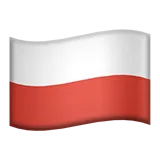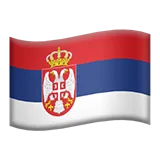In product management, prioritization is the compass that guides teams towards their ultimate goal: delivering a product that pays off and truly resonates with their audience. It's the practical tool that helps managers navigate the complex path of development.
At JetStyle, we are enthusiasts of the product development approach, and we’ve dealt with dozens of most common issues related to prioritization. In this article, JetStyle’s CEO and co-founder Alexey Kulakov will talk about the basics of this notion.You’ll learn the definition of prioritization, its core components - frameworks, goals and metrics, and correlation between teams and backlogs. Enjoy!
Prioritization is the product manager’s core tool
What is the overarching goal of product development? While they are numerous, one unifying objective prevails: delivering tangible value to a larger client base.
Prioritization is the fundamental tool for a product manager to accomplish their objective: to ensure the team channels its resources to achieving the product’s goals and to avoid local optimization.
How does a product manager understand that they met their goals? They use a specific set of metrics to assess their team's progress. Ensuring that the product consistently reaches its targets is the essence of product management.
What is a backlog?
Companies and business owners I work with often ask about the possibility of one team managing multiple backlogs. It is a structured to-do list; teams work through tasks listed in it, as they progress towards their objectives.
Backlogs are characterized by their linearity. If your team has only one developer and that developer has to manage two backlogs, it disrupts this structure. This developer would need to constantly switch between tasks, potentially compromising priorities.
Having multiple backlogs managed by one team is not the most efficient approach. It leads to losing focus, as the team divides its resources and attention across several goals. No focus equals no success. The best approach is to have an equal amount of goals and teams. If your business has one team, it should pursue only one goal at a time.
One example for when a business may have 2 backlogs is the later stages of product development. The product is still growing, but at this point, it is developed enough to have its own support system. These two parallel tasks comprise 2 backlogs.
What is a framework?
To effectively prioritize tasks, you should create your own framework. This will enable you to evaluate the true impact of your product and see the efficacy of your progress towards your goal. Next, you assess the efficiency of each activity and determine which has the biggest positive impact on your goal. Then these are placed at the top of the prioritization list.
A framework is essentially a collection of tools you use to accomplish a particular goal. There is a common misconception that frameworks must be used in a singular prescribed manner. In truth, any existing framework serves as a blank canvas. I am convinced that the only criterion is effectiveness. In other words, a product team can and should adapt any tool to align with their specific objectives and activities. A good prioritization system is always tailor-made.
There's one more thing to note. Most prioritization frameworks tend to be somewhat rigid, as they often rely on mathematical data. Frameworks serve as your visualization tool. They offer a snapshot of the current state of affairs. Don’t take the numbers generated by a framework as a fundamental truth; they are, at best, approximations. Rely on rational thinking, combine the numbers with your expert insight, and then make informed decisions. This table with numbers is just a foundation for your choices.
As some extra reading on this topic, I highly recommend you to explore Daniel Kahneman’s approach to conducting job interviews. He compared two different approaches to hiring new people: intuition-based one, and the ‘objective’ one that relies on tests and questionnaires. Spoiler: neither of them were as effective as combining the two methods of decision making. Expert opinion together with accurate data are a perfect match.
Before you start prioritizing,...
- Describe the strategy behind your process.
I use the idea of a strategic triad: a strategic actor, object, and actor's intent towards the target. The product manager serves as the strategic actor. They possess the authority to effect change within the system they oversee. The object of the strategy is the product itself, representing the ongoing process of delivering value to the customers. The product manager's intent is to align the product with its defined objectives.
This system is rather simple and obvious. However, quite often a product development process lacks a dedicated manager. In other cases, a manager is not primarily focused on the product's advancement. If any of these three strategic elements—the actor and object of the strategy, and the actor’s intent to effect change—are absent, the process will likely not progress as intended.
- Define your product’s goal. Without it, your prioritization efforts are futile. Prioritization always derives from a goal.
- Clarify how your goal translates into observable changes in people's behavior. After all, product development is fundamentally about enhancing people's experiences. If your actions fail to elicit any noticeable shifts in behavior, then those actions are ultimately meaningless.
Basically, the algorithm looks like this:
- Define your business goal
- Find ways how your product may contribute to the business goals,
- Track changes that your audience experiences,
- Create a method to measure the impact of your activity.
Example
Example: an online store selling kids’ goods (clothes, toys, diapers, etc) has low customer retention: parents, the service’s target audience, leave goods in the cart and rarely complete their second purchase. Improving retention indicators is a business goal, and as the team will experiment to achieve it, it’s crucial to track how exactly it will impact the users’ experience.
First, the team researches the customers’ behavior to find out why they are reluctant to come back. Are there any negative factors that make customers unhappy as they use the service? Are we doing enough to attract them to buy goods at our shop? Are we using all of the available customer data for improving our marketing strategy? For example, if we pay closer attention to details of our customers' orders, we can predict what they will need in the near future. With this information, it’s possible to offer discounts and launch an upsell campaign that would attract more customers to come back to the service and increase their sales check.
At the start of the experiment we need to set up a metrics system. It will help us see whether our campaign is successful and we see our customers change their behavior. In this particular case, the metrics would relate to the percentage of clients that used our offers, profit margin, number of return visits, LTV (life-time value), or other metrics related to customer loyalty and retention.
***
In the next articles Alexey will cover most popular prioritization frameworks, present relevant case studies, and share practical tips for all those on the product development journey.








